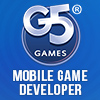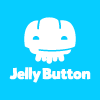Located in Gothenburg, Swedens second largest city, Free Lunch Design employs a creative team that produces world class games for multiple platforms. The team has produced over 70 games for PC/Mac and iOS/Android so far; some of them have been downloaded millions of times. Free Lunch Design is looking to keep innovating and develop games that will knock your socks of, no matter what platform or genre. In this article we will focus on describing some major events in the development of Icy Tower 2.
One-man-army origins
Free Lunch Design was originally a one-man-army (consisting of Johan Peitz ) making retro-inspired PC games for free download. Out of the numerous games released, one of them stood head and shoulders above the rest: Icy Tower. Since its release in 2001, it became especially popular among young students around the world, in part due to the ease in which it could be installed on a school computer. The simple and fun game found a following and lived a life of its own for the remainder of the 00’s. Meanwhile, Johan Peitz joined forces with local game developers Muskedunder, to create advergames. Soon Muskedunder aimed to change focus from B2B to B2C, and to build on the previous success of Icy Tower became the obvious first step. A successful release of a Facebook version of Icy Tower in 2009 solidified the pursuit for B2C, and a name change to Free Lunch Design confirmed the decision.
Once mobile gaming became the next big thing, we knew the time for Icy Tower 2 had come. The game hit the app store in November of 2012, containing several exciting changes from the original to keep it fresh and suitable for handheld devices. The release was another success with 1 million downloads in 10 days, which led to the decision to bring the game to Android.
The Game Design Gauntlet

Johan’s short leave could have gone horribly wrong, but in the end just cost us a little bit of extra time. Actually, it led to a new way of working with game design proposals. Johan and Jimmy are game designers with different approaches and strengths. The key was not to let egos run the show, but to allow them to contribute mainly with their respective strengths. We went all in with this approach, involving the entire team in the game design. This made the differences between the designers play a proportionally small part and tapped into the full potential of each team member.


The way we involved the whole team was by letting all game design ideas run through a “gauntlet”. Every member of the team sat down in a “group design session” and it was the designer’s (or anyone else in the team with an idea) job to sell an idea for a problem solution, a feature or design change. It was everyone else’s job to try their hardest to shoot the idea down. If the designer could defend the idea in a convincing way, the idea passed the “gauntlet” and earned a slot in the next sprint. This went on for several weeks and really made a huge difference for the design quality, team morale and general fun factor of working on the project.
Everyone was involved and felt they could bring up worries they had about the game in a constructive way. This was a new way to work with design for us, and even though it cost a lot of hours, we’ll be using “the gauntlet” again! One important thing to remember is to have some form of emergency brake, when the sheer joy of being creative is no longer relevant to solving your problems. Be problem oriented and assign a moderator to pull the brake.


Good is not good enough
One lesson from our former B2B business model was that “good is good enough”. This had to be repeated as a mantra whenever our pride and ambition to deliver premium quality products was larger than what the budget allowed. At the end of the day we had to deliver what was paid for, not what we wanted to deliver in order to feel proud.
Going from B2B to B2C, we had to re-program our minds in this area. Simply being “good enough” wouldn’t cut it, facing the cut-throat competition on the mobile platform. We had to raise the bar several times, which was an internal struggle. The uncomfortable truth was that the game was good, but not quite good enough, when the budget was spent. The budget for the project was set with the old “good is good enough” in mind, and we had to admit defeat when we realized the production would need to be extended several more weeks in order to get the game where it needed to be.
In retrospect this could be viewed as a failure to see the obvious, but the lesson is to understand that every start-up company has its growing pains. The discomfort it brings must not be seen as failure, but instead an opportunity to grow. We had in fact changed our business model completely and there are hard lessons every time you face a new area of expertise to master. This was one of them. Handling them successfully - albeit at a real cost - makes you grow. Growing is painful, so prepare to deal with it.
The complexities of being simple
You would think that having simple gameplay and having made several successful incarnations of that gameplay would make things easier. In some ways it is easier, since we have the experience and a proof of concept. In some ways it’s harder, since you work under the restrictions to not stray too far away from the original.
We knew there would be some fundamental changes to the game. The big one was controls. We wanted to design it for the handheld touch device and that meant getting rid of keyboard-like controls. This seemingly small change has effects that ripple throughout the product. It sets the bar for the speed of the game, the difficulty level of interactions, input frequency, etc. Getting it right took numerous iterations and only through hard work were we able to create controls that felt simple.
One other challenge was to add new and exciting features without changing the objective of the game. It has always been about getting as far up the tower as possible. Introducing mechanisms to acquire money - and things to spend the money on - diluted the simplicity of just beating your high score. We were obsessed with the thought of keeping the game objective true to the original. In the end we had to accept that the game could be played with different objectives for different players. Some want to complete stuns, others try to hoard money and yet other just want to have the highest score possible. You can’t tell someone how they should have fun, just let them play and figure it out themselves. We could do other things though: put in extra effort in the tutorial; adjust the timing in which we introduce new features and in overall presentation of the tower collapsing.
Personal growth
The biggest impact from a personal growth aspect was probably the way the game design gauntlet affected the team. Some team members stepped out of their ordinary role and got to shine elsewhere, either with an idea or throwing something wacky out there that triggered another person to formulate the “sane” version of the same idea. You don’t have to be a designer to propose an idea, just getting a design idea challenged from different points of views is healthy. It leads to constructive dialogues where people not only grow closer, but team members can have a lasting impression on your personal methodology in creative scenarios.

In retrospect
The development of Icy Tower 2 took longer than initially expected, but resulted in big value. It taught us how to act when losing key members, what it takes to raise the bar (quality-wise) and how to keep our heads in the game when assumed simplicity grew complex. Involving all team members in the design process gave us a fresh take on the creative process and we think that’s reflected in the game, which we feel successfully introduces new and fun ideas to a classic game.
Icy Tower 2 has recently been released on Google Play. Free Lunch Design will be sharing more in-depth insights on Icy Tower 2 during their indie-postmortem talk at the Casual Connect Europe conference in Hamburg, Germany.
Comments









